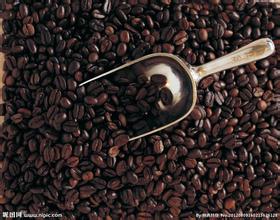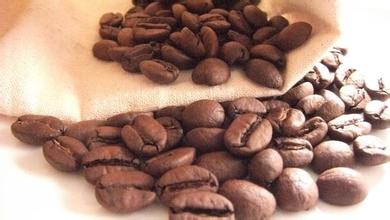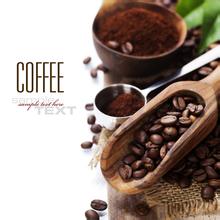What brand of coffee beans is better? coffee beans related food information
Hawaii Kona Extra fancy kona raw beans
A coffee producing area considered to be one of the best in the world must cover six important factors: soil quality, altitude, sunshine, cloudiness, rainfall and slope. Hawaii is blessed with these six elements to produce the best and most respected coffee in the world. Soil: fertile tropical Hawaiian volcanic soil that provides the dense nutrients of the Kona Coffee Tree. Altitude: the appropriate altitude of 2100 to 3600 meters and the cool moonlight promote the fruit of Kona Coffee to ripen slowly and create an excellent taste with rich appearance and full moisture.
Ethiopia plus snow coffee Ethiopia Washed Yirgacheffe coffee raw beans
Medium to pointed (delicate) acidity and medium body, smooth and well balanced cup with a creamy, buttery flavor. The Cream of the Ethiopian Crop with real Mocca flavor. Yejaschefine is the representative of East African boutique coffee (specialty coffee). It has a very special and unusual aroma of citrus fruit and flowers, which makes it one of the most distinctive coffee in the world, which is rare and expensive. It is produced in the highland of sidamo province, Ethiopia (4000 feet above sea level), in a relatively high and narrow area. Yega snow coffee is of high quality that is difficult for ordinary mochas to reach, and it is also an excellent representative of African washed coffee.
Ethiopia (Ethiopia) mocha coffee raw bean Ethiopia mocha green bean
Arabian coffee is the hometown of Arabian coffee, which grows at high latitudes and needs a lot of manual care. Here is the famous Ethiopian mocha, which has a sour taste similar to that of wine, fragrant and productive. Ethiopia also sells coffee through the port of Mocha in neighboring Yemen across the Red Sea, so Ethiopian sun-treated coffee is often referred to as mocha. Canada in the southwest and Sidamo in the south are the main producing areas. In addition, the Eastern Highland Hara is also famous for its coffee. The beans are small and fragrant, and Hara. Mocha "Longgubeli" is a special name with a unique flavor, usually only known as "mocha". Its specification is divided into G (grade) 1-G8 according to the mixing ratio of defective beans.
Tanzania PB coffee raw beans Tanzania coffee green bean / Peaberry garden beans, usually the best
Most of the Tanzanian beans are grown in Mr. Kilimanjaro and Mt, near the northern Kenyan border. The Meru area, often called "Clemangaro", is occasionally named after the distribution center Moshi or Arusha. In addition, on the southern side of the border, a little washed Arabica beans are produced, named after the nearby big city Mbeya or the distribution center Pare. The way of grading is similar to that of Kenya, distinguishing sizes by the English alphabet. Most Tanzanian beans have typical African bean characteristics. The better Clemencaro, similar to ordinary Kenya, has a strong texture, is usually milder acidic than Kenya, and evenly stimulates the taste buds in the middle and sides of the back of the tongue. It tastes a bit like tomato or soda. As for southern beans, they are similar to secondary water-washed mochas, with soft and ingratiating weak acidity, round taste, and medium texture. Beans from neighboring Malawi (Malawi) also have the same quality as Tanzania beans.

Important Notice :
前街咖啡 FrontStreet Coffee has moved to new addredd:
FrontStreet Coffee Address: 315,Donghua East Road,GuangZhou
Tel:020 38364473
- Prev

What do you think of the good and bad coffee beans? the efficacy and function of coffee beans and edible methods
1. The influence of coffee on emotion. Experiments show that the average person absorbs 300 milligrams of caffeine a day, which has a good effect on a person's alertness and mood. 2. Coffee is good for the skin. Coffee can promote metabolic function, activate digestive organs, and has a great effect on constipation. Taking a bath with coffee powder is a kind of thermotherapy, which has the effect of losing weight. Drink a cup of coffee after dinner
- Next

Arusha Coffee Manor Sumatra Island Lindong Tanzania
After the coffee is harvested, the peel, pulp, racing peel and silver skin should be removed before shipping. There are two kinds of methods: drying (also known as natural or non-washing) and washing. Dry type: the method is relatively simple. First of all, spread the freshly harvested fruit on the sun field for a week or two until the fruit crackles and dries naturally. After that, the sheller will be wiped out.
Related
- Does Rose Summer choose Blue, Green or Red? Detailed explanation of Rose Summer Coffee plots and Classification in Panamanian Jade Manor
- What is the difference between the origin, producing area, processing plant, cooperative and manor of coffee beans?
- How fine does the espresso powder fit? how to grind the espresso?
- Sca coffee roasting degree color card coffee roasting degree 8 roasting color values what do you mean?
- The practice of lattes: how to make lattes at home
- Introduction to Indonesian Fine Coffee beans-- Java Coffee producing area of Indonesian Arabica Coffee
- How much will the flavor of light and medium roasted rose summer be expressed? What baking level is rose summer suitable for?
- Introduction to the characteristics of washing, sun-drying or wet-planing coffee commonly used in Mantenin, Indonesia
- Price characteristics of Arabica Coffee Bean Starbucks introduction to Manning Coffee Bean Taste producing area Variety Manor
- What is the authentic Yega flavor? What are the flavor characteristics of the really excellent Yejasuffi coffee beans?

